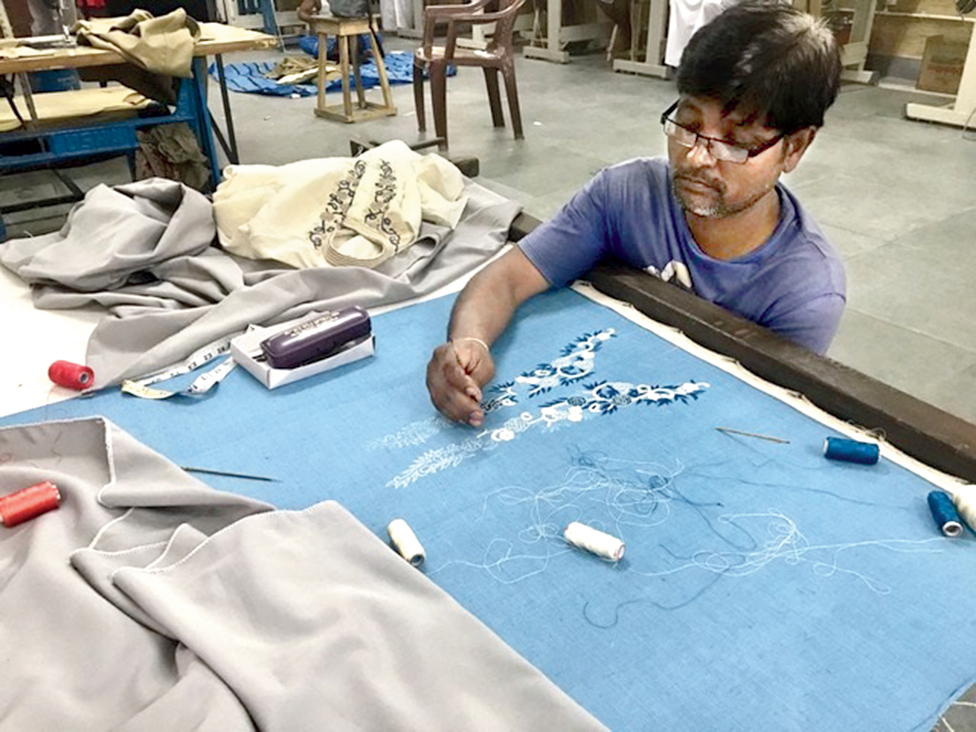According to the letter, their demands include a moratorium for upcoming statutory dues at least until March 31, 2021; the relaxation in payment of utility bills at least until December 31, 2020; employer unemployment pay cover at least until three months from the date when the government permits opening of commercial establishments, factories and godowns; the waiver from liability towards payment of rent for commercial establishments, factories and godowns, among others.
Speaking to t2, some of the signatories voiced their concerns. “Everything has literally stopped in terms of buying, orders and supplies for raw material like yarns and other things. I don’t think when we resume we will make anything new. The idea would be to have a very practical approach. Luckily, we are a slow brand so we are in sync with the idea of not over-producing. But I really hope that the government comes forward and provides either a credit line or low-interest loans, along with deferments in various overheads or bills that factories generally have,” said Gaurav Jai Gupta of Delhi-based label Akaaro, who has 60 people working for him.
Closer home, Abhishek Dutta broke down the cancellations of weddings and its impact on the industry, as he said, “The summer collection, in a way, is dead stock for the entire designer fraternity and so is the fall because production has halted. Summer weddings have either been cancelled or postponed and since the Indian fashion industry thrives on the wedding market, so you can understand the situation. Previous outstanding payments have also come to a halt.” Abhishek has around 45 direct employees, 50 “job-workers” and another 50 at correctional homes for his other design projects.
“Not all the designers are left with ample reserves to wade through this crisis. Smaller businesses are not in a position to process formal paperwork to seek support from banks. So if easier term loans are approved that would help a lot of businesses,” said Rimi Nayak, who has a 10-member team.
“The immediate action is allocation of funds for paying our entire set of workers — from tailors and embroiders to printers and more, rentals and taxation for the units and stores,” added Abhishek.
For Eshaani Jayaswal, who has 21 direct employees (and a few more indirect) and who was in the middle of working on a new collection, “it’s going to take a lot of effort and courage to start afresh”.
As Nil put it, “apart from the halt in business and the help needed with its continuity, designers urgently need help to keep paying the workers who depend on us. At least 10 of us even collated the bank details of our employees and sent it directly to the ministry so that they could transfer cash to them directly, if they wanted. Of course we are worried about our business but foremost, we are worried about our workers. Many of us are drawing from our personal accounts now to pay them.”
The first letter was sent in the second week of April. However, the signatories are yet to receive a response from the ministry.
With a nationwide lockdown to combat the Covid-19 pandemic, the fashion industry is grappling with unprecedented losses in the middle of their spring-summer season. Productions have had to be halted and demand has been nose-diving. With the Indian fashion industry relying on a range of talent starting with workers, craftsmen and artisans, the designers are faced with the added pressures of having to secure the livelihoods of both their direct and indirect employees.
“As soon as the (first) lockdown was announced, I started getting calls from a lot of designers, worried about not being able to make the payroll for their dependents. Most of them, like us, have started from scratch and don’t necessarily have funds to cushion the blow. That’s when I started talking to lawyers to understand what our options were,” said designer Nil, one half of design label Dev R Nil.
Sleepless nights of collating data and communicating with a couple hundred designers have now resulted in a letter having been sent to the ministry of textiles in India with at least 120 signatories featuring names such as Rohit Bal, Rohit Gandhi & Rahul Khanna, Tarun Tahiliani, Ikai, Antar-Agni, Amrich, Gaurav Gupta and many more, from across the country.
“The textile and clothing industry in India employs over 105 million people and earns around $40 billion foreign exchange, apart from substantial revenue under GST and other taxes. While we are taking utmost care to ensure that our workers do not withstand the worst of this unforeseeable incident, in the long term we are certain that we will not be able to sustain our staff and workers if production remains suspended for long. Besides, this closure and slump will clearly have a cascading effect, which will be felt for many more months ahead,” are excerpts from the letter addressed to Smriti Zubin Irani, union minister of textiles, among others.
In their 2019 State of Fashion report, McKinsey and Company in partnership with Business of Fashion, had listed India’s ascent as one of the top 10 trends of the global fashion industry. On the back of India’s buoyant economic growth, fashion manufacturing was also supposed to see a boost and have an apparel market “worth $59.3 billion in 2022”. However, the narrative now has altered drastically.

Nil with one of his workers during happier times Sourced by The Telegraph











